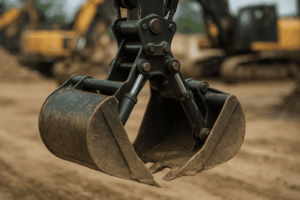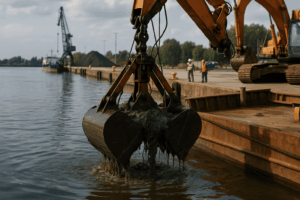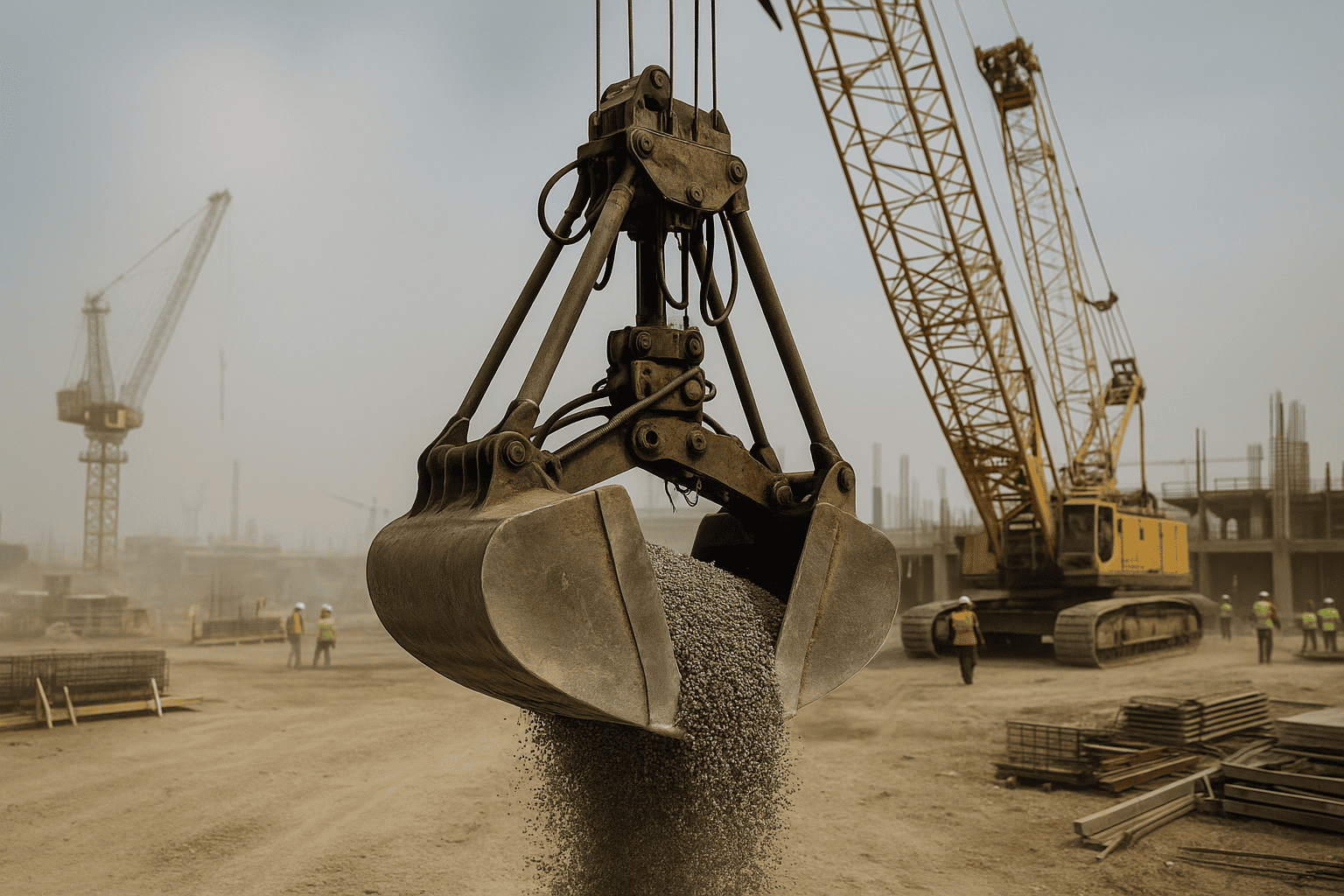One of the most widely used attachments for large material handling is the clamshell bucket, a versatile tool used in many public works tasks. In many construction projects, having the right machinery makes all the difference in terms of efficiency, safety and results.
What is a clamshell bucket and what is it used for?
The hydraulic clamshell bucket is an attachment consisting of two symmetrical buckets that open and close like a grapple, making it possible to handle loose materials with precision. Thanks to their opening and closing system, which is operated by hydraulic cylinders, these tools have become essential for loading, unloading and excavation work.

What is a clamshell tool used for? Its main function is to collect, hold and transport materials such as soil, aggregates, rubble or sludge. Generally, it is used in civil works, with hydraulic tasks, in port operations and in recycling plants.
Types of clamshell buckets according to their application
There are different types of spoons adapted to their intended use:
- Clamshell bucket with teeth. Ideal for digging in very hard or compact soils.
- Smooth clamshell bucket. Perfect for loose materials such as sand, gravel or cereals.
- Reinforced clamshell bucket. It is designed to withstand high stresses in demanding operations.
- Hermetically sealed buckets. Designed for handling sludge or liquids.
- Special models for dredging. It is a good option for use in diaphragm walls or channel cleaning.
On which construction machinery are clamshell grabs installed?
This type of hydraulic attachment can be mounted on different types of heavy machinery equipment, adapting to the type of work and environment. The most common are:
- Crawler or wheel excavators. They are ideal for earth moving and deep excavation.
- Hydraulic cranes and truck cranes. They are used for loading and unloading operations, especially in port environments.
- Dredges and floating dredges. They are designed for dredging and cleaning of riverbeds.
- Backhoe loaders (mixed type). They usually combine a front shovel and rear arm and are very useful in works with reduced spaces.
As we can see, thanks to their compatibility with multiple equipment, the clamshell grabs can be adapted to different civil works, port or industrial needs.
Clamshell buckets in public works: when are they used?
Knowing when to use a clamshell grab is key to getting the most out of this attachment. In infrastructure and public works projects, they are mainly used in:
1. Loading and unloading of bulk materials
Clamshell grabs for loading and unloading are ideal for handling materials such as aggregates, coal, slag, biomass or scrap. They are common in port environments or in material warehouses.
2. Dredging and cleaning of riverbeds
In hydraulic works, clamshell grabs are used for dredging and clamshell grabs for river cleaning, allowing the removal of some sediments, sludge and solid waste with precision.
3. Deep excavations
They are generally used in foundations, trenches or diaphragm walls where depth and control of the material during lifting is required.
4. Earthworks in civil works
In land preparation, infrastructure construction or landfill sites, this attachment speeds up work and reduces costs.
5. Port and industrial works
Clamshell grabs for port work are very important on docks and for ships, facilitating fast loading operations, even in adverse conditions.

Advantages of using clamshell buckets in your construction project
When starting a construction project, choosing the right clamshell grab for each type of machinery and job has clear advantages:
- Increases productivity on construction sites.
- Improves accuracy in material handling.
- Reduces execution time and errors.
- Allows working in areas of difficult access.
- Prolongs the useful life of the machinery.
- It offers customized solutions for complex projects.
Large companies with extensive experience in civil works often incorporate these attachments as part of their regular machinery.
Where to buy a clamshell bucket?
If you are looking for a clamshell bucket, it is important to verify its compatibility with your excavator or crane before purchasing. Similarly, you should confirm the type of material and capacity you need, in addition to betting on manufacturers with quality assurance. Another less common option is to consider the rental option if it is for occasional use.
You can also find reinforced or adapted clamshell grabs for specific uses depending on the type of work site.
Conclusion
As we have seen throughout this article, clamshell grabs are an essential tool in the world of construction machinery, especially in public works that require efficiency, precision and load capacity. From deep excavation to river dredging, their versatility allows them to tackle a wide variety of jobs with total reliability.
If you have a construction project and are looking to improve the performance of your machinery, having a quality hydraulic clamshell grab can make all the difference. Visit our catalog or contact us for personalized, no-obligation advice.

